|
The Hundred/Hundred is a writing project that challenges Malaysians to write under a unifying theme with one small catch: all writings must be 100 words exactly. No more, no less.
My submission below was shortlisted and you may order the book for RM35 here. ----------------- Today 6.5 million people have been displaced due to war and prosecution. While I lament and struggle with work visas and open call restrictions, they are treated as less than human; for being gay, for having an opinion, for believing in a different god, or for being born on the wrong side of this man-made border. For where do you go when the place you call home rejects you? Where do you go when the choice is between home and survival? Where is home? And what if I were to come knocking on your doors, will you let me in?
0 Comments
This post is in response to this article 18 Female Artists Give Advice to Women Starting Out in the Art World In this post graduation season, life is always uncertain. Should I dive into the art world or be realistic and rational. Being passionate about things that on the surface seem like they exist on both ends of the spectrum can be exhausting yet rewarding. So when I read what Adrian Piper said, it sparked me. Adrian Piper It's not a snobby thing, but to me personally,
type (1) is craft- a skill I can hone; like painting a beautiful landscape, or making portraits out of nails and strings. something with a WOW factor, something made to be 'viral'. type (2) is design - making something in exchange for monetary needs. type (3) is art today - pushing boundaries, asking questions, making statements, So, I choose you. (3). Now all I need is a push off the diving board. I foresee this being a recurring theme in my blog to explain what is art from my view or a collection of the views of others; today featuring.. Peter Lindbergh CREATIVITY 'tis the season of job seeking. Life after graduation cannot be more confusing and stressful. One day you feel like a flying squirrel, and then others like a stale, dry biscuit.
The ultimate question it boils down to is "What skills do you have?" I think it is such a limited mentality, I believe that all of us have unlimited amount of skills, because it could be learnt easily. The difference with artists is not that we are limited by our skills, just our minds. The commitment to an idea would allow us to learn skills just to accomplish our goals. For example, to create solidarity, I had to learn how to sew, to make the cereal box video I had to learn video editing. Instead of thinking: what skills I can have to create something, artists decide what they want to make and then problem solve, problem solve, and problem solve until it is accomplished. So, when you ask an artist, what skills do they have the answer is unlimited. My professor Tom Lauerman (artist) teaches how to build 3D printers, my tech-allergic (artist) friend Christina Dietz learnt to direct a film and build a house for her film, "Honeybees and Homemakers: Pollination and Gendered Labor", my quiet (artist) friend Kaye Saxe learnt how to upholster furniture for a project. (Artist) Michael Grasso is improving his woodworking skills to better deliver his ideas, (Artist) Bonnie Collura was certified by New York City Fire Department for her welding skills, (Artists) Paul Outlaw and Jennifer Catron modified vehicles to suit their art purposes. We are always learning, a bee art project requires you to study animal behavior in detail, precision artwork may require new knowledge about 3D printing, laser cutting or CNC milling, a performance piece may require the knowledge of a stage set up, public speaking, each photoshoot requires basic knowledge of photo editing; mold making, casting, sound editing, projections etc the list is endless! So don't ask an artist what their skills are because the difference with artists is that the list is always expanding. We are the ultimate learners, idea driven people. Learning a new skill is our daily bread. Something as elementary and essential like simple sketches were I guess deemed not good enough to be shown. Until I decided to look up Antony Gormley- whose work I have always loved. After many videos, and reading through his books and learning about the ideas behind his work, I was amazed at the depth and message that his work has. It shed a whole new light on his sculptural works and I learnt to appreciate them not just aesthetically but also conceptually. Back-tracing the process to the drawing and idea stage, I was dumbfounded at the way he could suggest such distinct body language and emotions through simple lines through the use of different pigments, colored mediums and illustrations. His drawings, created out of a wide array of mediums such as rabbit glue, blood, semen and carbon pigments made me think of them as sculptural drawings rather than just simple sketches. In an odd way I feel like despite being known as a sculptor, Antony Gormley is far more successful to me as an illustrator. Through his lines, drawings and prints, he has transported me to dimensions unknown to my mind till just now. He has created such distinct images with simple line that carry so much weight and meaning. He has indeed created a space that is limitless, dimensionless and endless on paper, in space; literally making space. Check out his TED video to understand his work better. Think ceramics and you imagine elegant bowls or erratic tea sets but let these artists show you how it's really done. Since ceramics was not my first medium, I am constantly still struggling to make bigger, more precise work with a material that has a mind of its own. There are many different art styles that I am drawn to such as the 'minimalist functionalist' or artists that work with the figure or even installation as part of a performance or a set for photography. 1. Minimalist functionalist Ionna Vautrin, Yuval Tal, Ami Drach 2. Back to the Bodies Rabarama (Paola Epifan), Sueng Chan Lim, David Altmejd, Lucy Mc Rae 3. Ceramics as Installation
Clare Twomey, Ai Wei Wei, A M Martens, Carol Young Born in Los Angeles, California, to an American mother and a Japanese father, Noguchi lived in Japan until the age of thirteen, when he moved to Indiana. Coming from the Orient during the time period, it is easy to understand why Noguchi set out to have such strict and imposing rules for his artwork. Constantly emphasising on purity of form as ways of working, he obsessed with having his work be 'honest' rather than to recast them out of different materials like plaster. I guess he was in his way trying to preserve what little culture he felt he could still have and express them, he worked in stone mostly and later granite, creating architectural forms, landscapes with both geometric and organic shapes. After seeing an exhibition in New York, Noguchi worked at Brancusi’s studio. Inspired by the older artist’s reductive forms, Noguchi turned to modernism and a kind of abstraction, infusing his highly finished pieces with a lyrical and emotional expressiveness, and with an aura of mystery. His sculptural works dealing with the void came out of these experience no doubt however, his later years where he turned to mass production of his interior designs is what fascinates me the most. He was undoubtedly and artist and designer who boldly rode the lines that separate the two. Noguchi managed to change design of industrialised objects through minimalism rooted fundamentally in art. This tumblr site called "Fuck Your Noguchi Table" catalogs interior spaces that I think is reminiscent of Noguchi's industrial designs and art pieces. While the article made Noguchi sound like an uptight person who is overly controlling over the material and make of objects, I would like to end with this quote from Noguchi found on the Herman Milller website. "To limit yourself to a particular style may make you an expert of that particular viewpoint or school, but I do not wish to belong to any school,I am always learning, always discovering." I have been thinking of the collaborative work and what would be the easiest way to build this stuff to be easy to assemble and sturdy too. Ultimately it depends on what else everyone else is interested in making and the materials we will have for the piece.
This guy Arthur Ganson makes a ton of Kinetic Sculptures and I am really interested in making something similar to this one but with flowers. USing repetition to create a cal,ing space amid of chaos such us this space made of chairs. Here are some pictures that I found which are similar ; a chair sculpture in Abu Dhabi Here is another piece by a design firm a design firm made up of mostly triangles. I might want to try this using cardboard on the laser cutter instead and sewing or some other method of attachment that allows it to be more manipulable. Superabundant Atmosphere, an installation by Jacob Hashimoto includes thousands of shimmering white “kites,” each handmade from silk glued over a tied bamboo frame. Liga Pang | Ikasu9 November - 9 December 2001 Ikasu, the title of Liga Pang’s installation for Rice Gallery is a Japanese word that means “to give life to”. This word embodies Pang’s laborious process of transforming dead, brittle bamboo into an exquisitely contoured sculptural form. Pang and four assistants worked continuously for an entire month to weave the mesh of bamboo twigs that makes up the installation’s delicate, room-sized structure. To obtain the bamboo twigs for the installation, Pang and her assistants dismantled 150 large brooms of the type typically used in Japan to sweep outdoor gardens. Though it makes use of a common material, Ikasu is anything but mundane. Flexible but strong, fragile but rigid, the shaped curtain of bamboo mesh possesses a seemingly unearthly, understated grace. A cool gallery that I like to check up on regularly is the one in Rice University as seen here.
|
thinks and thingsis a blog / e-post-it / sketchbook / thought journal / idea diary / cool stuff logbook / artist daybook Archives
July 2018
Categories |



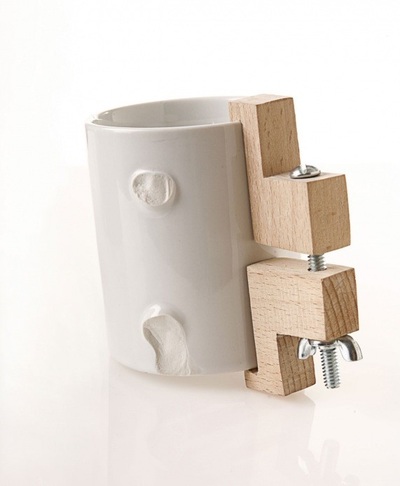






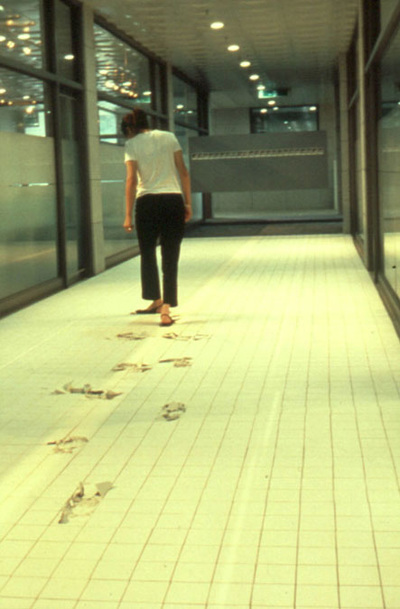





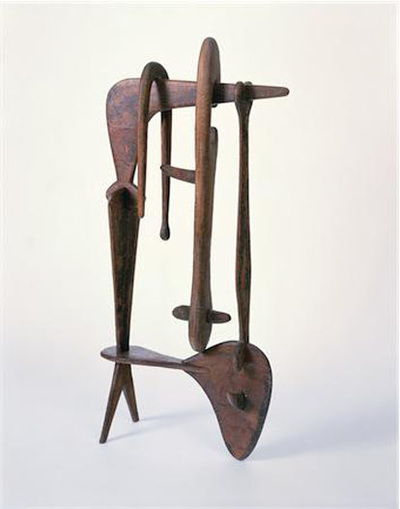















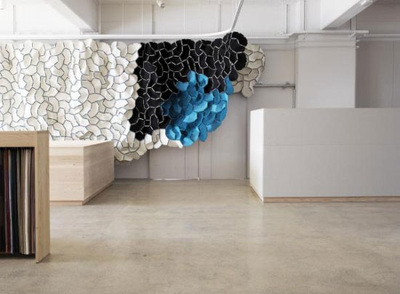



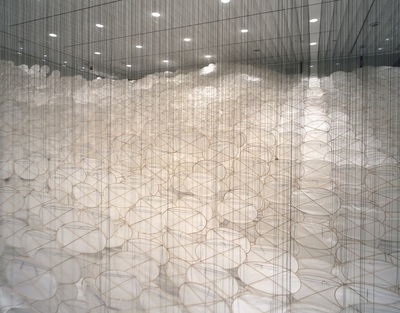
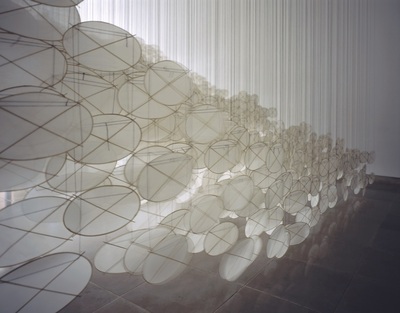




 RSS Feed
RSS Feed
